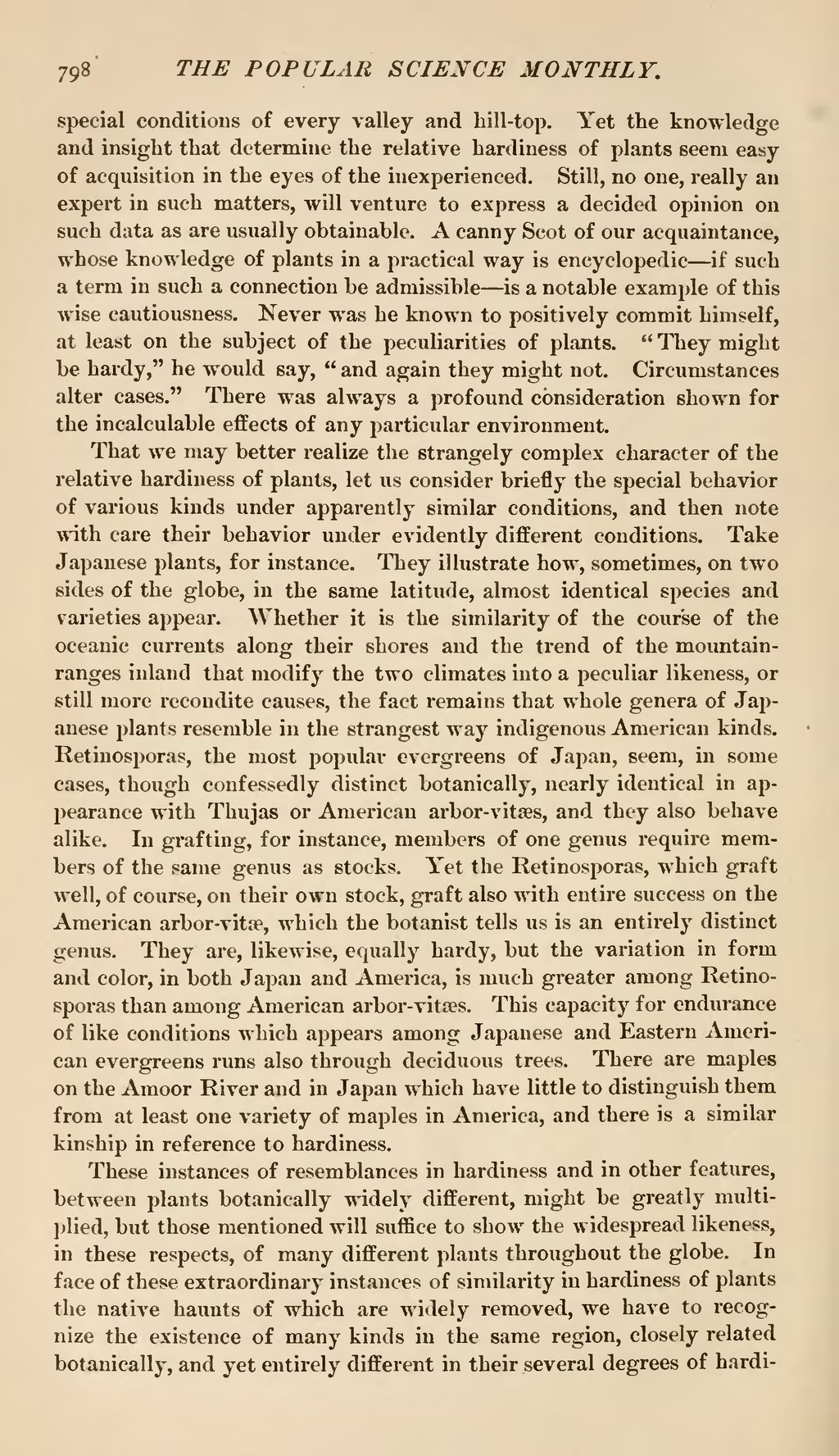special conditions of every valley and hill-top. Yet the knowledge and insight that determine the relative hardiness of plants seem easy of acquisition in the eyes of the inexperienced. Still, no one, really an expert in such matters, will venture to express a decided opinion on such data as are usually obtainable. A canny Scot of our acquaintance, whose knowledge of plants in a practical way is encyclopedic—if such a term in such a connection be admissible—is a notable example of this wise cautiousness. Never was he known to positively commit himself, at least on the subject of the peculiarities of plants. "They might be hardy," he would say, "and again they might not. Circumstances alter cases." There was always a profound consideration shown for the incalculable effects of any particular environment.
That we may better realize the strangely complex character of the relative hardiness of plants, let us consider briefly the special behavior of various kinds under apparently similar conditions, and then note with care their behavior under evidently different conditions. Take Japanese plants, for instance. They illustrate how, sometimes, on two sides of the globe, in the same latitude, almost identical species and varieties appear. Whether it is the similarity of the course of the oceanic currents along their shores and the trend of the mountain ranges inland that modify the two climates into a peculiar likeness, or still more recondite causes, the fact remains that whole genera of Japanese plants resemble in the strangest way indigenous American kinds. Retinosporas, the most popular evergreens of Japan, seem, in some cases, though confessedly distinct botanically, nearly identical in appearance with Thujas or American arbor-vitæs, and they also behave alike. In grafting, for instance, members of one genus require members of the same genus as stocks. Yet the Retinosporas, which graft well, of course, on their own stock, graft also with entire success on the American arbor-vitæ, which the botanist tells us is an entirely distinct genus. They are, likewise, equally hardy, but the variation in form and color, in both Japan and America, is much greater among Retinosporas than among American arbor-vitæs. This capacity for endurance of like conditions which appears among Japanese and Eastern American evergreens runs also through deciduous trees. There are maples on the Amoor River and in Japan which have little to distinguish them from at least one variety of maples in America, and there is a similar kinship in reference to hardiness.
These instances of resemblances in hardiness and in other features, between plants botanically widely different, might be greatly multiplied, but those mentioned will suffice to show the widespread likeness, in these respects, of many different plants throughout the globe. In face of these extraordinary instances of similarity in hardiness of plants the native haunts of which are widely removed, we have to recognize the existence of many kinds in the same region, closely related botanically, and yet entirely different in their several degrees of hardi-
